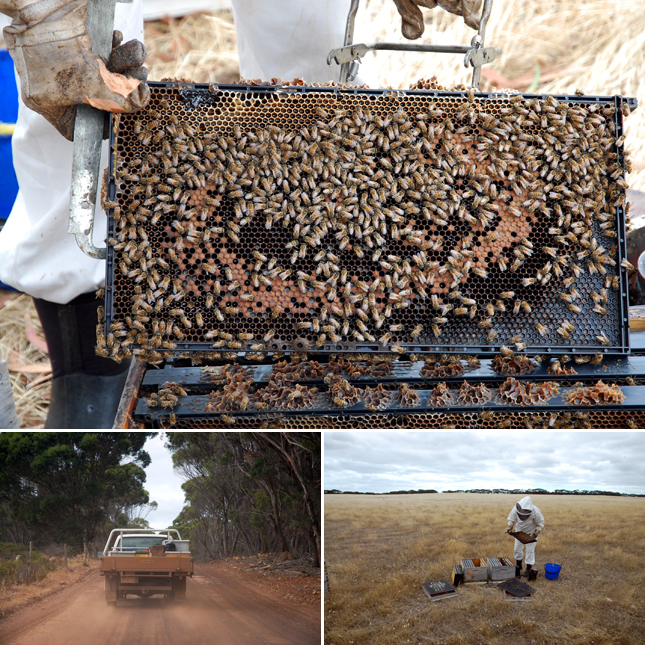
The last genetically pure population of the Ligurian honey bee lives on an island about as far from Italy as a bee, or person, can physically get. Their home is the aptly titled Kangaroo Island, a block of land about the size of Long Island or Puerto Rico that was given its name in 1802 by Matthew Flinders after he and his crew killed 31 ‘roos then made a giant pot of stew. To get to KI one crosses the 12 miles of the Backstairs Passage departing from the shore of Cape Jervis in South Australia. The island has 4,000 human inhabitants, 400,000 sheep, approximately 4 million wallabies and a huge number of Ligurian bees who have found an ideal working place. The climate is similar to their ancestral home in northern Italy, the flora is plentiful and they are totally isolated and thus have remained genetically pure.
The first Ligurian bees to make the 9,500 mile (15,250 kilometer) trek from Europe to the newly formed colony of South Australia were imported by the South Australian Chamber of Manufactures from Bologna, Italy.2 Why settlers requested hives, among other necessities such as seeds, plant cuttings and livestock, becomes obvious when one visits the region. It doesn't take a lot of effort to imagine how desolate and cutoff the place must have been ― and in many places, still is. In the early days of the colony the mainly English, German and Italian arrivals were mostly farmers, stockmen and a few were beekeepers. Once on the ground after their many months passage getting a farm, ranch or hive going was more than just the start of earning a living, it was a matter of survival.
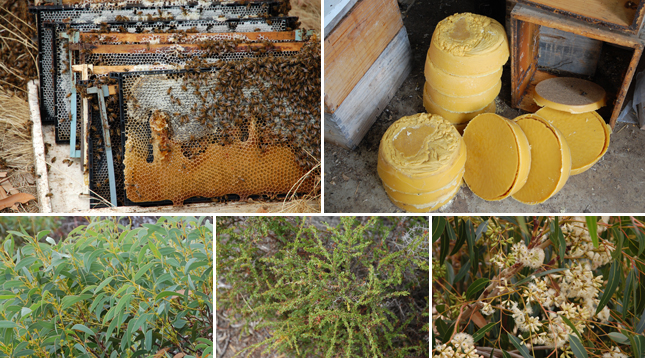
The person who brought the first Ligurian bees to Kangaroo Island has been traced by author/beekeeper Peter Barret who credits August Fiebig with establishing the first apiary in 1881. A closer look at the historical records of the time seems to indicate that all of South Australia, not just Kangaroo Island, was crawling with beekeepers. Enough that they had the amassed political clout necessary to have Kangaroo Island declared a bee sanctuary way back in 1885. In so doing they assured the purity of the Ligurian bee strain on the island thus making KI the oldest bee sanctuary in the world.
A pure strain of any species is rare these days, especially in the bee world in which continental population shifts have meant the crossing of species for centuries. The most famous being the migration of the African bees, also known as “killer” bees.1 What has made the itinerant African bees so successful is that the queen of an invading African bee colony hatches in 15 days ― a day earlier than all other species of queens. The queen’s first job from the egg is to order the workers to dispatch her rivals still developing in their individual hive cells. This does not mean that the African queens are more ruthless than other types of queen bees. The first hatched queen in any hive rids herself of her unborn competitors.
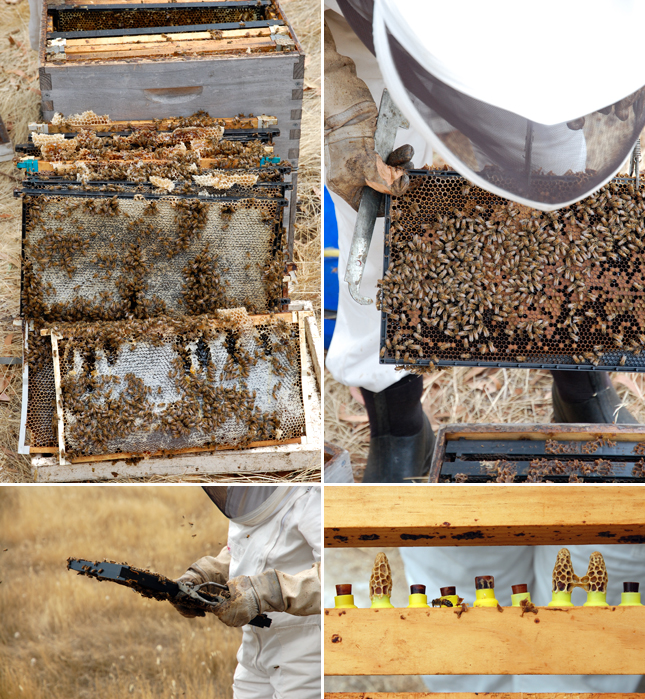
Having a pure strain of any kind of creature great or small is of enormous importance. As a scientific resource these bees are the genetic benchmark used to measure diversity caused by hybridization. Pure stock also enables beekeepers the ability to re-breed desired qualities back into hives. Incidentally, if you were wondering why the swarm of killer bees slated to sting North America to death never arrived in the frightening numbers forecasted, you can thank South American beekeepers who have bred killer bees with more cooperative varieties to deflate or eradicate their aggressive nature.
One of the most knowledgeable and involved queen bee breeders and beekeepers on Kangaroo Island, and beyond, is Betty McAdam who, along with her husband Jim, operate Hog Bay Apiary. “The queen reflects the hive,” explains Betty, “so if the queen is aggressive so is the hive. The Ligurian bees are known for their docility. It was the reason that they were chosen for introduction onto Kangaroo Island.”
Betty breeds Ligurian queens primarily for her own hives and produces a few to sell. A queen cell can go for anywhere from US$20 up to $500 + postage. To make a queen one needs only a queen-less hive. Instinctively the worker bees know that they must produce a queen so they feed a few egg cells a substance called “royal jelly,” a kind of super food that transforms the occupant of the egg into a potential queen. Betty keeps a hive kitted with a Jenter frame designed to keep queen cells separate. On a good day she can bring in 10 to 20 queen eggs that she later places in queen-less hives or hives whose queens are weak.
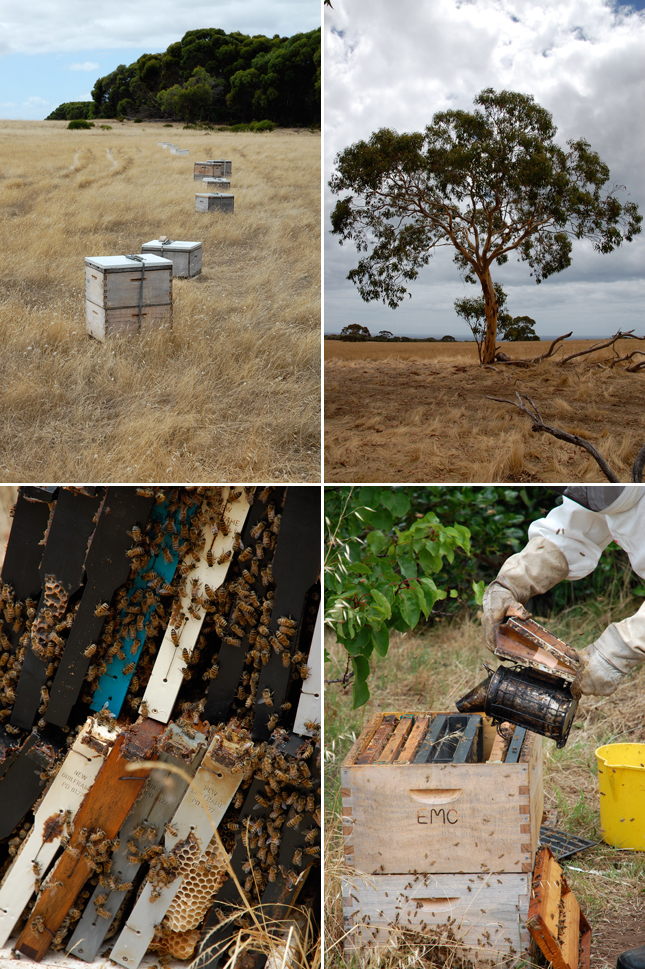
Aside from a weak queen there are few threats to the hives of Kangaroo Island other than flood and fire. Fortunately, or because of the purity of the bee stock and the low use of pesticides and fertilizers on the island the Ligurian bees have been spared the colony collapses and stresses that have taken a toll on their North American cousins. “Colony collapse has been recorded to occur every 30 to 50 years,” McAdam explains, “and no one understands why. In America now there are new stresses on hives and management practices that will have to change to keep hives healthy.” Ending the use of “localized pesticides” is one such practice. “These pesticides are in genetically modified seed hulls,” says McAdam, “the seeds germinate, grow, then flower. The pesticide appears in the pollen that is carried by the bees.” In effect the bees are bringing a poison into their hives.
Another benefit of isolation is that the Kangaroo Island bee colonies have never been exposed to other common diseases and bacteria that attack hives. Diseases such as American and European foulbrood bacteria or chalkbrood have so far been kept out due to, first the Ligurian Bee Act of 1885, making KI a sanctuary and the Apiaries Act of 1931 that allowed for the inspection and confiscation of any potentially infected vessel or apparatus heading to the island. These regulations and generations-long attention on the part of the island beekeepers have kept the strain disease free.
Proof of the significance of this can be found in the role the Ligurian Bees are now playing in combating two types of disease. First, research is being conducted on the KI bees to help scientist protect the rest of the world’s honey bee population, the second is in the battle against cancer.
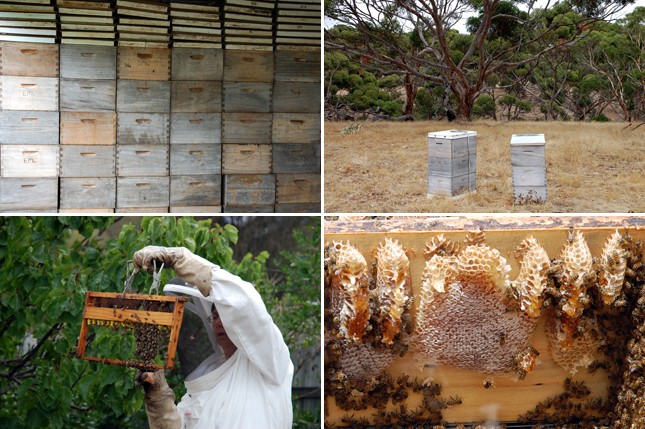
For 40 years the aforementioned Foulbrood diseases that have hit hives in the US, Canada and Argentina have been treated with the antibiotic tetracycline. At the same time there has been an increase in genetically modified crops. In a recent proposal McAdam presented to Slow Food as the secretary of the Kangaroo Island Bee Keepers Association she wrote: “With the increase of GM crops and the identification of genetic material from GM canola crops positively identified in bacteria found in the guts of honeybees, the importance of maintaining a pure genetic strain of bee becomes obvious. ...hive resistance to tetracycline in America and Argentina could be the result of the widespread and recent cultivation of GM crops containing tetracycline resistant genes. While this theory is still only speculative, a resource such as the supply of honeybees on Kangaroo Island could have much greater significance than ever imagined.”
The other area in which the Ligurian Bee of KI is creating a buzz is in cancer research. All hives produce an antibacterial substance called propolis. The bees use it to do everything from plugging holes to keeping the hive sterile by enclosing any harmful substance. In those instances when another insect or even a mouse enters the hive, the stung-to-death intruder is covered in a layer of propolis to prevent the spread of disease as the carcass decomposes. In beekeeping propolis is collected on slated mats kept on top of the hive. The propolis coated mats are gathered at the time the beekeepers collects the honey, frozen then scraped clean. Most of the propolis produced on KI is sent to Japan however samples are now being sent to the University of Sydney pharmacy faculty for analyzation. Early research results show that propolis taken from the hives of KI is high in Resveratrol, the mysterious “French Paradox Medicine.” Resveratrol is a naturally occurring stilbene that is an effective antioxidant, anti-inflammatory and has been effective in the treatment of tumors. Additionally, the presence of tetrahydroxystilbene has been found in KI propolis and only in KI propolis. This is significant because the tetrahydroxystilbene in conjunction with Resveratrol is so far unique in all of nature. Could this combination be the wonder drug?
Of course, the hardworking Ligurian Bees of Kangaroo Island have no idea of their uniqueness or of their enormous potential for good. Like all creatures they move through their life cycles concerned only with survival and keeping their communities healthy and alive.
Native Food & Wine dons bee suits and visits the hives of Betty McAdam of the Hog Bay Apiary. Get a close look at the secret lives of the rare Ligurian bees in this video.
Read about the Slow Food Ark of Taste listing of Kangaroo Island honey here.
Notes given by Pete Barrett, Kangaroo Island bee expert.
1 The African bee is not a killer bee, however when it was crossed with other varieties of European bees such traits were realised.
2 The bees were not directly imported from Bologna, Italy, but were sent from Brisbane, Queensland by Chas Fullwood. Fullwood arrived in Brisbane from London (having changed ships in Melbourne and again in Sydney) aboard the Alexandra on 29 October 1880, thus heralding the first successful introduction of Ligurian bees into Queensland.